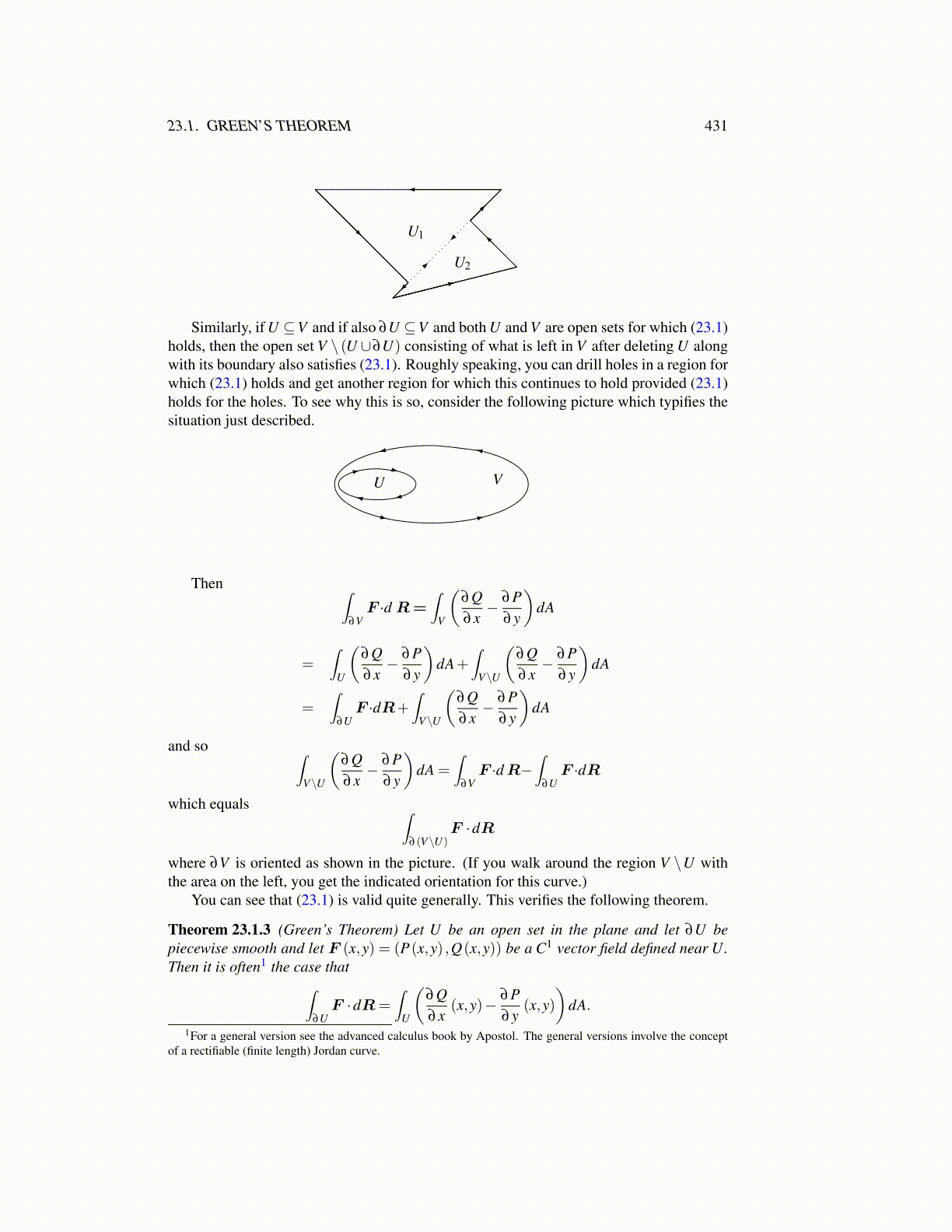
23.1. GREEN’S THEOREM 431
U1
U2
Similarly, if U ⊆V and if also ∂U ⊆V and both U and V are open sets for which (23.1)holds, then the open set V \ (U ∪∂U) consisting of what is left in V after deleting U alongwith its boundary also satisfies (23.1). Roughly speaking, you can drill holes in a region forwhich (23.1) holds and get another region for which this continues to hold provided (23.1)holds for the holes. To see why this is so, consider the following picture which typifies thesituation just described.
VU
Then ∫∂V
F ·d R=∫
V
(∂Q∂x− ∂P
∂y
)dA
=∫
U
(∂Q∂x− ∂P
∂y
)dA+
∫V\U
(∂Q∂x− ∂P
∂y
)dA
=∫
∂UF ·dR+
∫V\U
(∂Q∂x− ∂P
∂y
)dA
and so ∫V\U
(∂Q∂x− ∂P
∂y
)dA =
∫∂V
F ·d R−∫
∂UF ·dR
which equals ∫∂ (V\U)
F ·dR
where ∂V is oriented as shown in the picture. (If you walk around the region V \U withthe area on the left, you get the indicated orientation for this curve.)
You can see that (23.1) is valid quite generally. This verifies the following theorem.
Theorem 23.1.3 (Green’s Theorem) Let U be an open set in the plane and let ∂U bepiecewise smooth and let F (x,y) = (P(x,y) ,Q(x,y)) be a C1 vector field defined near U.Then it is often1 the case that∫
∂UF ·dR=
∫U
(∂Q∂x
(x,y)− ∂P∂y
(x,y))
dA.
1For a general version see the advanced calculus book by Apostol. The general versions involve the conceptof a rectifiable (finite length) Jordan curve.